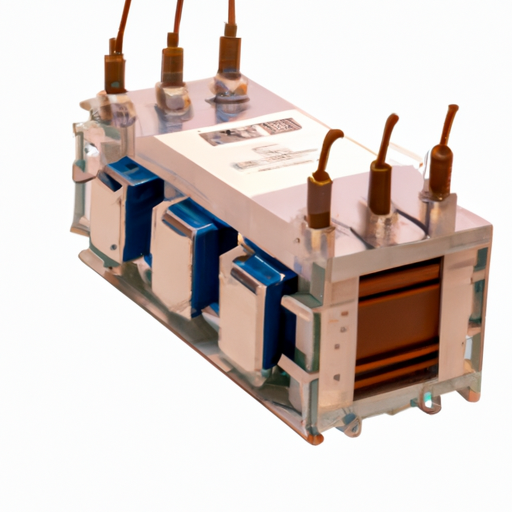Overview of Isolation Transformers and Autotransformers
Isolation transformers and autotransformers are critical components in electrical systems, serving essential functions such as voltage transformation, electrical isolation, and noise reduction. The CFR-25JB-52-1R5 model exemplifies the advancements in transformer technology, providing reliable performance across various applications. Below, we delve into the core functional technologies, applications, and notable development cases for these devices.
Core Functional Technologies
1. Isolation Transformers
- **Functionality**: Isolation transformers provide electrical isolation between input and output circuits, enhancing safety and reducing the risk of electric shock. They prevent direct electrical connection, which is crucial in sensitive applications.
- **Construction**: These transformers consist of two separate windings (primary and secondary) wound around a magnetic core, ensuring no direct electrical connection between the two.
- **Applications**: Commonly used in medical equipment, audio systems, and sensitive electronic devices to eliminate ground loops and reduce electromagnetic interference (EMI).
2. Autotransformers
- **Functionality**: Autotransformers utilize a single winding that serves as both the primary and secondary winding, allowing for efficient voltage transformation. They are more compact and cost-effective than isolation transformers.
- **Construction**: The winding is tapped at various points to provide different voltage levels, enabling step-up or step-down voltage transformation.
- **Applications**: Widely used in applications requiring voltage regulation, such as power distribution systems, motor starters, and lighting control.
3. Step-Up and Step-Down Transformers
- **Step-Up Transformers**: These transformers increase voltage from primary to secondary (e.g., from 120V to 240V), commonly used in power generation and transmission to reduce current and minimize losses over long distances.
- **Step-Down Transformers**: These decrease voltage from primary to secondary (e.g., from 240V to 120V), frequently used in residential and commercial power supply systems.
Application Development Cases
1. Medical Equipment
- **Case Study**: Isolation transformers are vital in medical devices, such as MRI machines, where they ensure patient safety by preventing electrical noise from affecting imaging quality. They also protect patients from electrical hazards, making them indispensable in healthcare settings.
2. Industrial Automation
- **Case Study**: In manufacturing plants, autotransformers are employed to control the voltage supplied to motors and other equipment. This capability allows for efficient operation and energy savings, particularly in variable speed drives, enhancing overall productivity.
3. Renewable Energy Systems
- **Case Study**: In solar power systems, isolation transformers connect inverters to the grid, ensuring safety and compliance with grid standards. They help manage power quality and protect against faults, facilitating the integration of renewable energy sources into existing power grids.
4. Audio and Video Equipment
- **Case Study**: High-fidelity audio systems often incorporate isolation transformers to eliminate ground loops and reduce hum and noise. This application enhances sound quality and provides a cleaner audio signal, crucial for professional audio environments.
5. Telecommunications
- **Case Study**: Isolation transformers are utilized in telecommunication systems to protect sensitive equipment from surges and transients. This protection ensures reliable operation and extends the longevity of devices, which is critical in maintaining communication infrastructure.
Conclusion

Isolation transformers and autotransformers are integral to various applications, from enhancing safety in medical devices to improving efficiency in industrial automation. The CFR-25JB-52-1R5 model represents the advancements in transformer technology, delivering reliable performance in diverse environments. As technology continues to evolve, future developments in these transformers will likely focus on improving efficiency, reducing size, and enhancing safety features to meet the growing demands of modern electrical systems. The ongoing innovation in transformer technology will play a crucial role in supporting the transition to more sustainable and efficient energy solutions.
Overview of Isolation Transformers and Autotransformers
Isolation transformers and autotransformers are critical components in electrical systems, serving essential functions such as voltage transformation, electrical isolation, and noise reduction. The CFR-25JB-52-1R5 model exemplifies the advancements in transformer technology, providing reliable performance across various applications. Below, we delve into the core functional technologies, applications, and notable development cases for these devices.
Core Functional Technologies
1. Isolation Transformers
- **Functionality**: Isolation transformers provide electrical isolation between input and output circuits, enhancing safety and reducing the risk of electric shock. They prevent direct electrical connection, which is crucial in sensitive applications.
- **Construction**: These transformers consist of two separate windings (primary and secondary) wound around a magnetic core, ensuring no direct electrical connection between the two.
- **Applications**: Commonly used in medical equipment, audio systems, and sensitive electronic devices to eliminate ground loops and reduce electromagnetic interference (EMI).
2. Autotransformers
- **Functionality**: Autotransformers utilize a single winding that serves as both the primary and secondary winding, allowing for efficient voltage transformation. They are more compact and cost-effective than isolation transformers.
- **Construction**: The winding is tapped at various points to provide different voltage levels, enabling step-up or step-down voltage transformation.
- **Applications**: Widely used in applications requiring voltage regulation, such as power distribution systems, motor starters, and lighting control.
3. Step-Up and Step-Down Transformers
- **Step-Up Transformers**: These transformers increase voltage from primary to secondary (e.g., from 120V to 240V), commonly used in power generation and transmission to reduce current and minimize losses over long distances.
- **Step-Down Transformers**: These decrease voltage from primary to secondary (e.g., from 240V to 120V), frequently used in residential and commercial power supply systems.
Application Development Cases
1. Medical Equipment
- **Case Study**: Isolation transformers are vital in medical devices, such as MRI machines, where they ensure patient safety by preventing electrical noise from affecting imaging quality. They also protect patients from electrical hazards, making them indispensable in healthcare settings.
2. Industrial Automation
- **Case Study**: In manufacturing plants, autotransformers are employed to control the voltage supplied to motors and other equipment. This capability allows for efficient operation and energy savings, particularly in variable speed drives, enhancing overall productivity.
3. Renewable Energy Systems
- **Case Study**: In solar power systems, isolation transformers connect inverters to the grid, ensuring safety and compliance with grid standards. They help manage power quality and protect against faults, facilitating the integration of renewable energy sources into existing power grids.
4. Audio and Video Equipment
- **Case Study**: High-fidelity audio systems often incorporate isolation transformers to eliminate ground loops and reduce hum and noise. This application enhances sound quality and provides a cleaner audio signal, crucial for professional audio environments.
5. Telecommunications
- **Case Study**: Isolation transformers are utilized in telecommunication systems to protect sensitive equipment from surges and transients. This protection ensures reliable operation and extends the longevity of devices, which is critical in maintaining communication infrastructure.
Conclusion

Isolation transformers and autotransformers are integral to various applications, from enhancing safety in medical devices to improving efficiency in industrial automation. The CFR-25JB-52-1R5 model represents the advancements in transformer technology, delivering reliable performance in diverse environments. As technology continues to evolve, future developments in these transformers will likely focus on improving efficiency, reducing size, and enhancing safety features to meet the growing demands of modern electrical systems. The ongoing innovation in transformer technology will play a crucial role in supporting the transition to more sustainable and efficient energy solutions.










